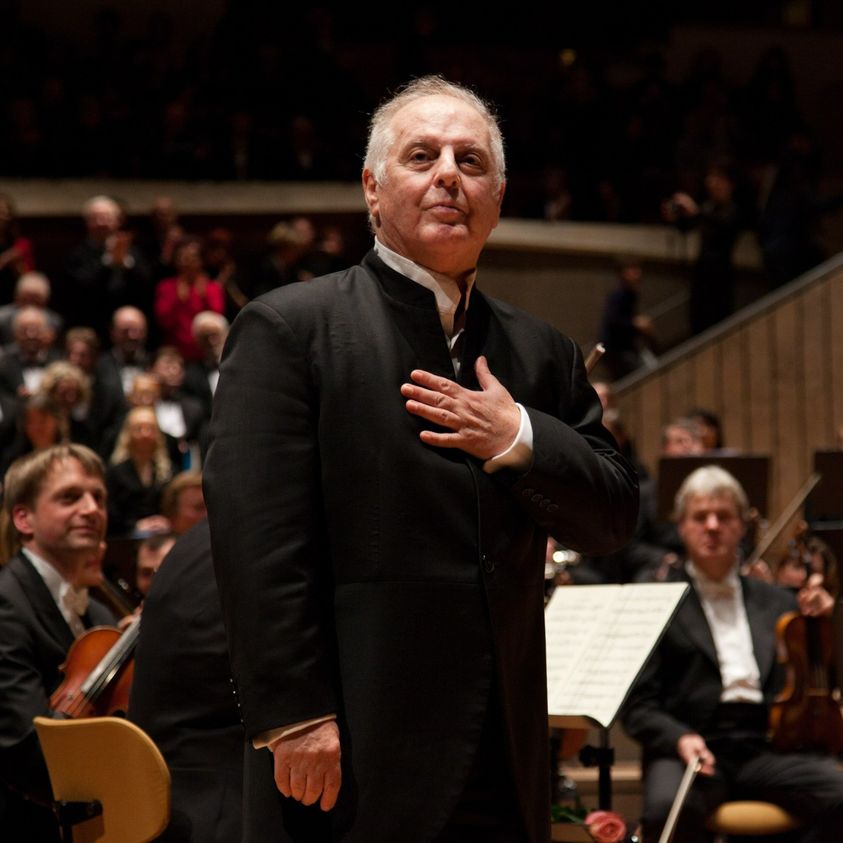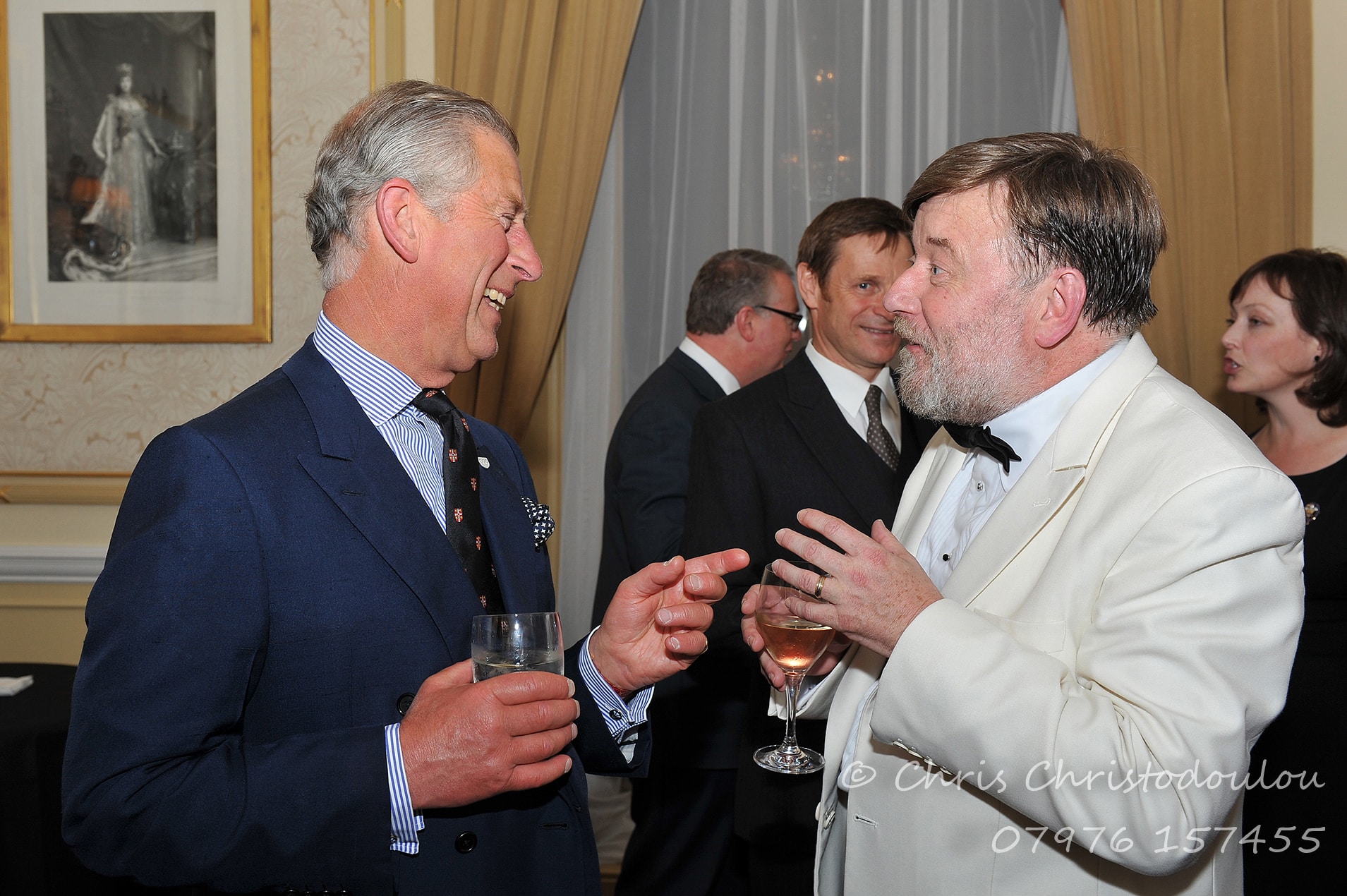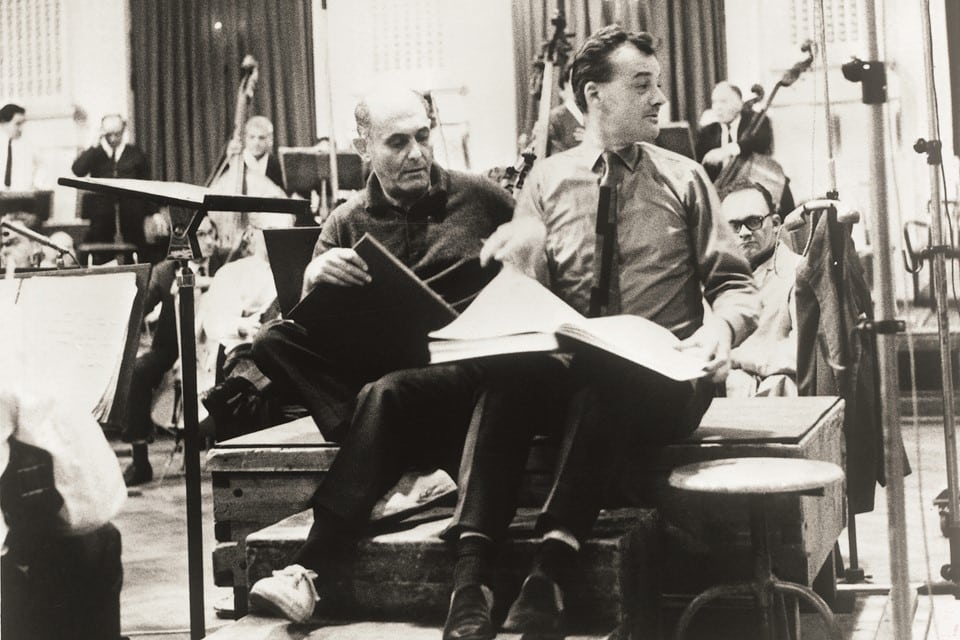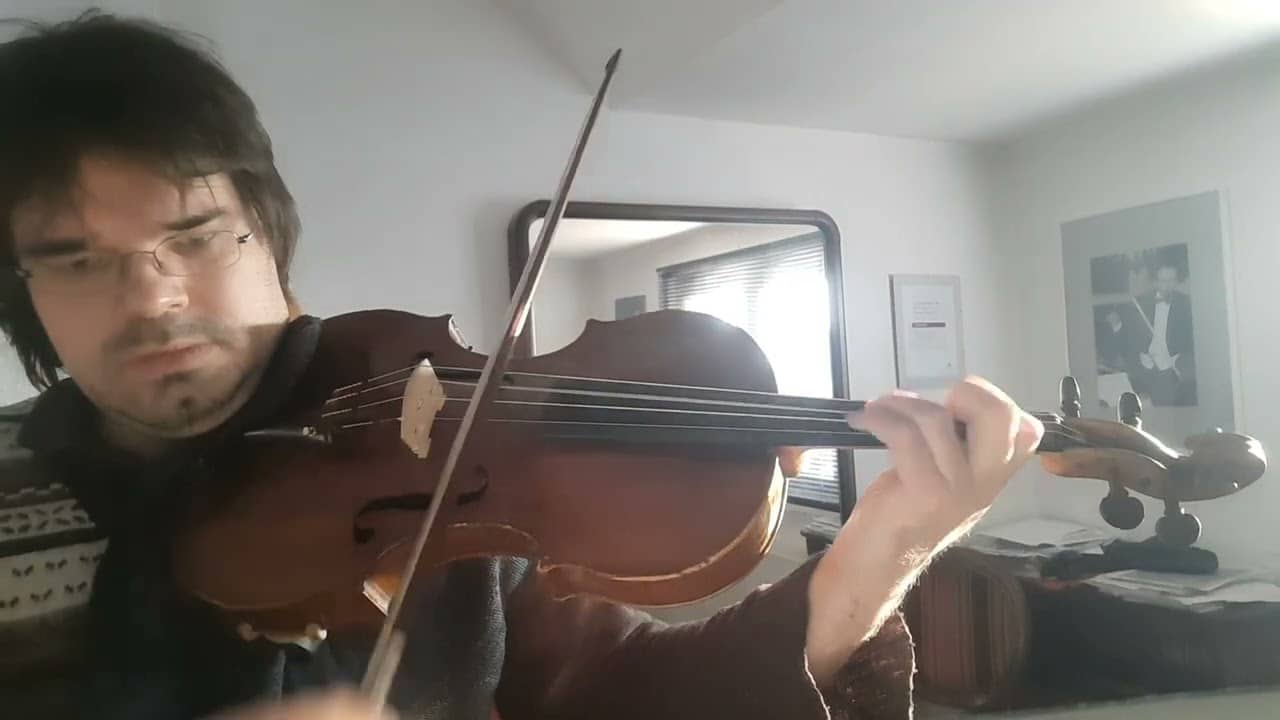Ruth Leon recommends…Instruments of the orchestra – Sir Malcolm Sargent
Ruth Leon recommendsInstruments of the orchestra – Sir Malcolm Sargent
Click here to watch : Free
How things have changed. And, sometimes, for the better. Here’s a look back to what arts programming used to be and, thank goodness, is no longer. Its intentions were good, I’m sure, as this was an earnest attempt to introduce the orchestra to children who, presumably, hadn’t seen one before.
Sir Malcolm Sargent presents, and conducts, the London Symphony Orchestra, in a performance of Benjamin Britten’s Young Person’s Guide to the Orchestra. The music was commissioned from Britten by the Crown Film Unit, specifically for this film. It was made in 1946, and the players were those who had sustained the orchestra through the war years: the younger musicians, men and women, were still in the armed forces and were yet to be demobbed.
What we actually see, though, is an endless sea of miserable-looking white middle-aged and elderly men and one equally depressed-looking woman stuck in the middle of the violas, without a smile between them. The only other woman in the entire orchestra is, of course, the harpist – men only played the harp in Ireland and then they were called harpers, not harpists.
Any child forced to sit through the entire programme (and they would have to have been forced, no child or indeed sentient adult would sit through it from choice) would have been turned off orchestral music and musicians for life. Pity, because it’s wonderful music.
Read more






Sorry but I don’t agree. It is of its time. We didn’t know any better then. It’s easy to sit back now and say how awful. Remember it’s not so long ago that someone, can’t remember who, told orchestras to smile when taking a call because they all looked as miserable as sin and the Vienna Phil. has not long had ladies in its orchestra
Thank you for posting this wonderful video, and it is only a shame that it is accompanied by such a horribly overly woke commentary.
Of course, the orchestra is made up nearly entirely of white men, it was 1946. Were there any orchestras in the U.K. or elsewhere in Europe at that time with more than a few non-white male players? I would be interested in seeing any such archival footage.
It is exactly this type of commentary that is ruining classical music today, and honestly, I am surprised that Norman promotes such content here on his site.
Britten’s Young Person’s Guide is perhaps the greatest introduction to the orchestra ever created in the history of orchestral music. This film alone surely must have inspired countless young people at that time, and it is ridiculous to think that they “would have been turned off orchestral music and musicians for life”.
So the violists are not smiling? This is not a toothpaste commercial. Show us one example of a viola section playing this excerpt with smiling players 🙂 Orchestra musicians generally do not smile while performing (nor should they necessarily), and besides that, those were different times. People did not smile for portraits then too, nor did they take selfies. You might as well also complain at how repressed they were for not allowing the musicians to openly wear a pink mohawk (yes, I have indeed seen a currently player, perhaps the Prague Symphony timpanist, wear).
Perhaps Ruth Leon could try to compose, or perform, or conduct, or at least film a new piece that demonstrates what she believes would be an improvement? Rather than be an arm-chair critique and attempt to take down the masterworks and high standards of the past, rather try to create something new and positive to attempt to improve on the bar that has already been raised to such a high level.
And on that note, can anyone suggest any repertoire that is comparatively excellent for introducing young audiences to the orchestra?
Oh, and by the way, Britten’s music was composed in 1945 and this footage was produced in 1946. Is there one contemporary composer of the stature of Britten or any composer who could have their 2020 composition filmed and broadcast in this manner in 2021? How dare you state “thank goodness” that arts programming is no longer the same? I would say exactly the opposite, that it is a shame that arts programming is no longer as good as it used to be.
Excellent comments.
And what current “arts programming” is the writer referring to? It’s difficult to find any.
The commentary is racist and obnoxious.
Always thought YPG should be paired with Peter and the Wolf!
Mr Lebrecht, your comments are a little unfair:
1. The war had only recently ended.
2. Rationing was still in place.
3. Some of those players faced losing their jobs once LSO regulars returned (or at least those who’d survived the conflict). If they all looked serious it’s perhaps because classical music was/is regarded as serious. If you watch a concert on, say, YouTube you’ll see that many players don’t smile, either whist playing or whilst taking applause.
4. Major orchestras at that time were staffed almost entirely by men, and this continued to be the case for many years afterwards.
5. Accepted, the production standards of that time might charitably be regarded as quaint, but look at children’s programmes of the time and into the 1950s and you’ll see what I mean.
6. You can’t fairly criticise the producers for simply presenting classical music (although Britten’s music can’t really be described as classical) to the standards of the time.
7. We should regard the “Young persons” film as an earnest attempt to attract young people.
8. If you’re interested in audience demographics, watch Dave Hurwitz of Classicstoday.com on YouTube. He has several videos, including one on how audiences have changed over time.
The film is of its time surely. Even in the 80s I remember a player in a well known regional orchestra being disciplined for being seen smiling on a live TV broadcast.
The LSO in 1946 was in bad shape. Maurice Pearton, in his history of the LSO, recounts how the leader wrote to the board recommending the sacking of almost the entire 2nd violin section.
In the event it was the leader who was sacked due to pressure from the Decca record company.
In the horn section on the film two of the players are father and son – the father being clearly past his best (sadly he outlived his son who was a very fine player). The 1st horn, sitting to the left of the section as you look at it which was common in those days but now almost unknown, had recently left the army in which he had been a ballistics expert (being a renowned mathematician as well as a very fine horn player and one of London’s leading players until the 1960s).
why should the musicians smile.
i never smiled when the boss came to
into my office.
Don’t be so stuffy, Norman! As Elizabeth Owen says, it is of its time and, in fact, rather well done. Notice how the individual groups are filmed in different formations when it’s their turn, and some amusing touches such as the player ‘suddenly’ discovering a piccolo in his top pocket. The commentary is a variation on Eric Crozier’s original (as in the printed score), but presumably had Britten’s approval, and seems to suit Sargent, who sounds not much different from when he gave his Last Night speeches at the Proms. As for the smiling, orchestral players are too busy concentrating on playing the music, but these don’t look particularly grim at all – I love the quizzical expression on the face of the timpanist, Harry Taylor, or the concentration of his colleague Fred Harmer playing the side drum, or the harpist Marie Goossens . . . A ‘period piece’, yes, but I see nothing to complain about and much to enjoy – and it was enjoyed at the time!
Thanks for the opportunity to see it again.
. . . and I forgot to mention the two trumpeters who look very pleased with themselves after Variation K. Also the way players adjust their instruments before playing or generally make ready. This is quite brilliant direction and imaginative camera work, with a lot of dry humour.
No one would have needed to force me to “sit through” any concert of classical music as a child. As for expecting instrumentalists to “smile” automatically this is just fatuous. The facial expression is of no importance whatsoever, only the expression in the music. I think you need to broaden your mind and credit the listener with intelligence regardless of their age.
What a particularly fatuous and ill informed piece from Ms Leon. This was probably a Robert Meyer Childrens’ concert (Malcolm Sargent conducted many of them after the war and was a particularly popular conductor). Tens of thousands of children attended the concerts and were allowed to bring an adult as a guest. Far from being forced to attend, these concerts were extremely popular. It was proper grown up music, with real musicians, not gurning entertainers who feel that they have to make a fool of themselves if they are to entertain children. Children hate nothing more than being patronised.
“Far from being forced to attend …… being patronised”
Excellent points.
Ruth Leon should know better. It reads like the work of a 20 year old, unaware of anything before 2000.
Based on the write up I was expecting something quite stilted and tiresome but this strikes me as rather good. Grinning and mugging for the camera would have been out of place, unrealistic and forced, and would have done nothing to make a young audience feel more like this was being done for them.
And kids are quite accustomed to adults looking — well, like adults, meaning older than they are.
I did notice that once the solo portions began, you could see some of the players glance nervously to the side (so seemingly, not at the conductor) and I suspect the film director was giving them cues, not musical cues, but for the various bits of stage business about getting their instruments ready (the woodwinds) that looked rehearsed. The art deco stage seating was also probably a source of some nervousness for the players, and I am sure it had been impressed on them that film making is expensive and difficult even more so than making a sound recording. Hence the serious expressions as this was serious business.
I suspect generations of young people have squirmed during Deems Taylor’s unconvincing avuncular talk during Disney’s Fantasia as much as I did. I think there would be less squirming for Sir Malcolm’s approach, crisp and somewhat business-like. but not condescending.
As for no smiling, the castanet player wins that prize, but the tympanist seems to be enjoying himself.
Some fine playing is captured on this film. It would be interesting for an LSO historian to name the players.
Directed by Muir Mathieson, himself a noted conductor and composer. He conducts on my 78 rpm shellacs of the Warsaw Concerto for example. One bio says he studied under Malcolm Sargeant.
What I particularly liked was how all the camera had to do was pan down the line to catch each entrance of the winds in the beginning of the fugue. Whether Britten composed to suit the usual seating, or the seating was arranged to match the fugue entrances I do not know, but well done either way!
To add my bit (always late to this party since I’m 7 or 8 hours behind GMT):
People don’t grin when they’re concentrating, even if they love what they do. Does Lionel Messi run around the field — excuse me, pitch — grinning like a fool just because he loves to play
soccerfootball? Come on.Even kids don’t smile when they’re concentrating: watch any child playing intently with blocks or Legos. It’s OK to look serious during a serious activity.
And oh my god — middle-aged people! That’s the absolute worst thing you can show in a classical music video. Because everybody knows that kids can only be interested in something if they see young people doing it. The reviewer forgets, perhaps, that lots of kids used to learn to play instruments, and being good at one used to have some prestige attached to it. TV wasn’t a widespread thing yet, and the Beatles were just little kids. Even the Berlin Philharmonic didn’t gyrate in their seats back then the way they do now.
And something that’s easy to overlook, because it’s a common part of the repertoire nowadays: this piece is hard. A lot of us study the excerpts in school, or at least know about them; but this music was brand-new back then. There were no recordings for these people to listen to growing up, or teachers to tell them “I remember the first time I played the Young Person’s Guide…” So a certain amount of okay-got-to-be-ready-for-this-next-bit is to be expected.
The legendary Osian Ellis played the harp in Wales, one might even say “for Wales”… Seems he’s been forgotten already?
An absolutely wonderful recording. I love it. No doubt the players would have been told not to smile – trust the principal trumpet to smile, and so he should.
I thought this was rather good. I’d have liked it as a child and I enjoyed watching it now.
Yes, it’s dated but what is there now for children that’s any better? Is there anything?